Sasabe
By riding this route, you will have an impact on wildlife. Please limit group size to 4.
Caution! We do not provide turn-by-turn directions in our GPX files. Those are auto-generated by your bike computer and are usually less than 70% accurate. Learn more.
For help loading a GPX file onto your bike computer, go here.
DownloadHighlights & Remarkable Spots
Altar Valley / ~ the entire ride
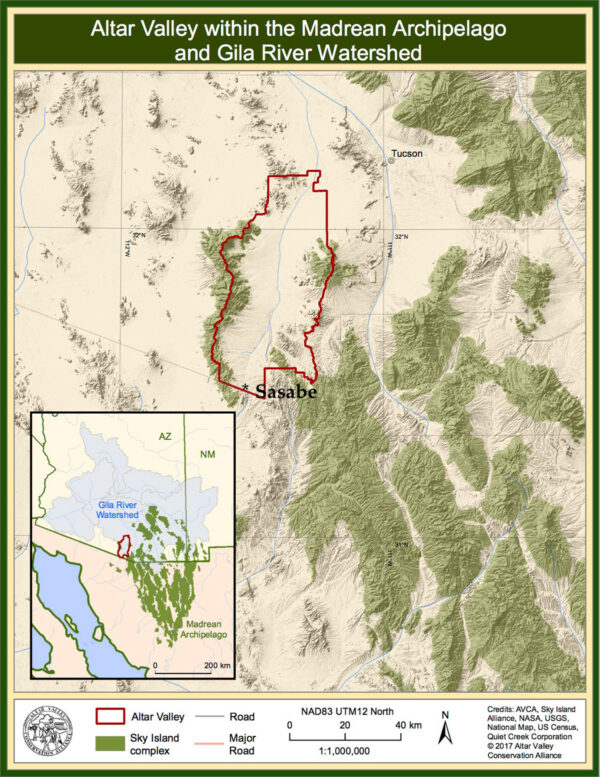
Riding through the Altar Valley, “the stark, quiet beauty of the valley becomes evident as does the heat, aridity, and peril the environment presents for humans. Long before the Altar desert corridor became one of the most tragic settings for the desperate movement of migrants into the U.S., the area stretching from Altar, Sonora, to Robles Junction, west of Tucson, Arizona, was home to numerous indigenous groups, Spanish missionaries and settlers, and then Mexican and Anglo American ranchers. In the Arizonan portion of the Altar Valley Corridor, all water flows north, mainly through the Altar Wash. On the Mexican side, all water flows south to the Gulf of California along the important Altar River which has its source in mountains along the U.S.-Mexican border near the Tres Bellotas Ranch west of Nogales.” [Nomadic Border]
Ranch de la Osa / ~ mile 12
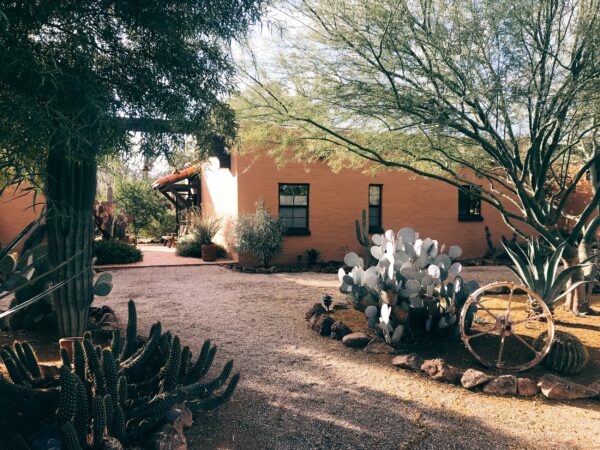
Jesuit missionaries traveling from Spain built a mission outpost on the property in 1720. Today the building serves as the Cantina and is considered to be the oldest continuously occupied building in all of Arizona.
In the late 1800s, the land was purchased by a cattle ranching tycoon who transformed the acreage into a cattle ranch with over 80,000 cattle.
In the 1930s, Richard (“Dick”) Jenkins, the chairman of the Arizona Democratic Party, purchased the ranch and hosted many political dignitaries, including President Lyndon B. and Lady Bird Johnson, Vice President Hubert Humphrey, President Franklin D. and Eleanor Roosevelt. It is here that William Clayton drafted the Marshall Plan, an important American initiative that provided critical post-war financial aid to European countries.
Other notable guests include Hollywood celebrities Joan Crawford (one of Hollywoods most prominent movie starts in the 1920s), Margaret Mitchell (author of Gone With the Wind) and John Wayne (actor staring in Westerns).
Sasabe / ~ mile 14
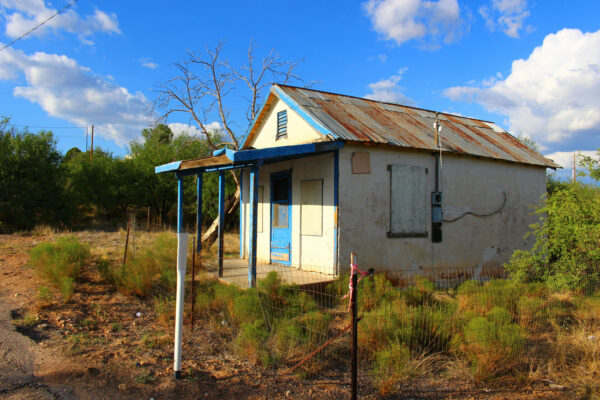
“A walk through the only paved street in Sasabe demonstrates what is left over from earlier times in this border town. Many adobe homes here bear witness to the heritage of the ranching community that formerly existed in Sasabe. Many of these homes have been built with bricks formed at the brickyard in Sásabe, Sonora, Mexico. Before the demographic decline that affected the Altar Valley and Sasabe with the reduction of the local cattle industry, many of the cowboys from nearby ranches – such as the Aros, De la Osa, Buenos Aires, and Santa Margarita – lived in these homes.” For the complete history, read this piece by Nomadic Border.
Baboquivari Peak / ~ mile 23
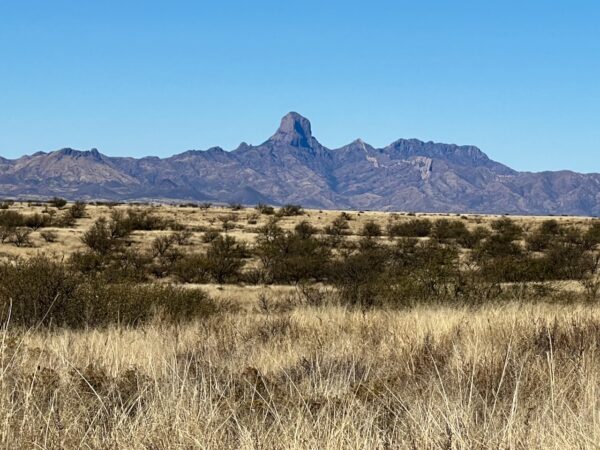
“Baboquivari Peak is an important regional geographic landmark and one of the most sacred sites for the Tohono O’odham (“Desert People”) of Southern Arizona and Northern Sonora. According to the traditional religion of the O’odham, humanity emerged into the world through this holy mountain after a flood. I’itoi, the creator of the world, is believed to live in a cave within the mountain from which he watches over his people today. The image of I’itoi – depicted in Tohono O’odham art as a man in the middle of a circular maze – is popular throughout the Arizona-Sonora border region. The maze represents not only the path to reach I’itoi within his cave at Baboquivari but also the decisions a person makes throughout their life path.” [Nomadic Border]
Buenos Aires Visitor Center / ~ mile 26.5

This is a must do stop! Open seasonally; the Center has a series of exhibits showcasing the Refuge’s ranching history, flora and fauna, and conservation efforts.
Once a cattle ranch, the Refuge was purchased in 1985 under the authority of the Endangered Species Act to reintroduce the endangered Masked Bobwhite Quail back into the wild. Today it is managed by the Fish and Wildlife Service, who are working to reestablish a breeding population of the masked bobwhite quail while restoring the native grassland, and protecting the Refuge’s diverse habitats for native plants and wildlife as well as threatened or endangered species such as the Chiricahua leopard frog and Pima pineapple cactus. [US Fish & Wildlife Service]
Credits & Acknowledgements
Much of the history on the Altar Valley and Sasabe is by Carlos Parra, an inaugural Presidential Postdoctoral Fellow at the University of Arizona in Tucson. His blog, Nomadic Border, is worth some of your time. A big shout out of thanks!
When We Like to Ride This
A really special time to ride Buenos Aires is just after the summer monsoons end when everything is super green. But … you need to find a day that is not too hot, as this route is a very exposed route to sun and wind. Overall, the route rides well fall through spring.
Terrain & Riding
This is one of the “easier” rides we have found in the desert southwest.
What you can expect: rolling hills flanked by mountain ranges to the east and west and exceptional views of Baboquivre Peak. You will dip around and through seasonally wet marshlands and meadows, stately cottonwoods, and hackberry and mesquite groves.
The refuge is home to over 320 species of birds and Pronghorn, mule deer, coyote, and javelina. If you are “super” lucky, you could also catch a glimpse of a mountain lion, coatimundi, ring-tailed cats, badger, desert tortoises and Gila monsters. Just by riding this route, you will have an impact on wildlife … please review this resource page to learn how to minimize your impact.
The Start
A dirt pullout just on the west side of Highway 286, directly across from the paved road leading to the Buenos Aires Visitor Center.
Food & Water
- @ mile 14 / Sasabe Store
Route Notes
You will have an impact on wildlife by riding this route, possibly a significant impact. Please review our Wildlife Impact resource page to learn how to minimize your impact during the ride. Thanks!
You may see Border Patrol on your ride. We typically stop and talk with them and do the following: (1) give them our route for the day and (2) ask if there is anything we should be aware of (i.e. “if this is not a good day to ride, tell us, and we will turn around and call it a day”).
We recommend you download a copy of this map for your adventure. It is the only map with all the roads and road labels that we have found. It is made possible by the Friends of Buenos Aires National Wildlife Refuge. A $5 contribution can be made at the Visitor Center or online for the map. We encourage you to do this!
For a complete history of the area, we recommend these two articles found on Nomadic Border.
Rancho de la Osa is a really cool stop, but please call in advance to make arrangements to visit. And …. remember to spend where you ride!
You may encounter open cattle grazing. See this resource page on how to pass by cattle safely.
Route Options
This route can also be started from Rancho de la Osa. In fact, we recommend that you stay at the ranch and ride from there. Both this ride and the Buenos Aires (Rancho de la Osa start) ride can be done directly from the ranch.



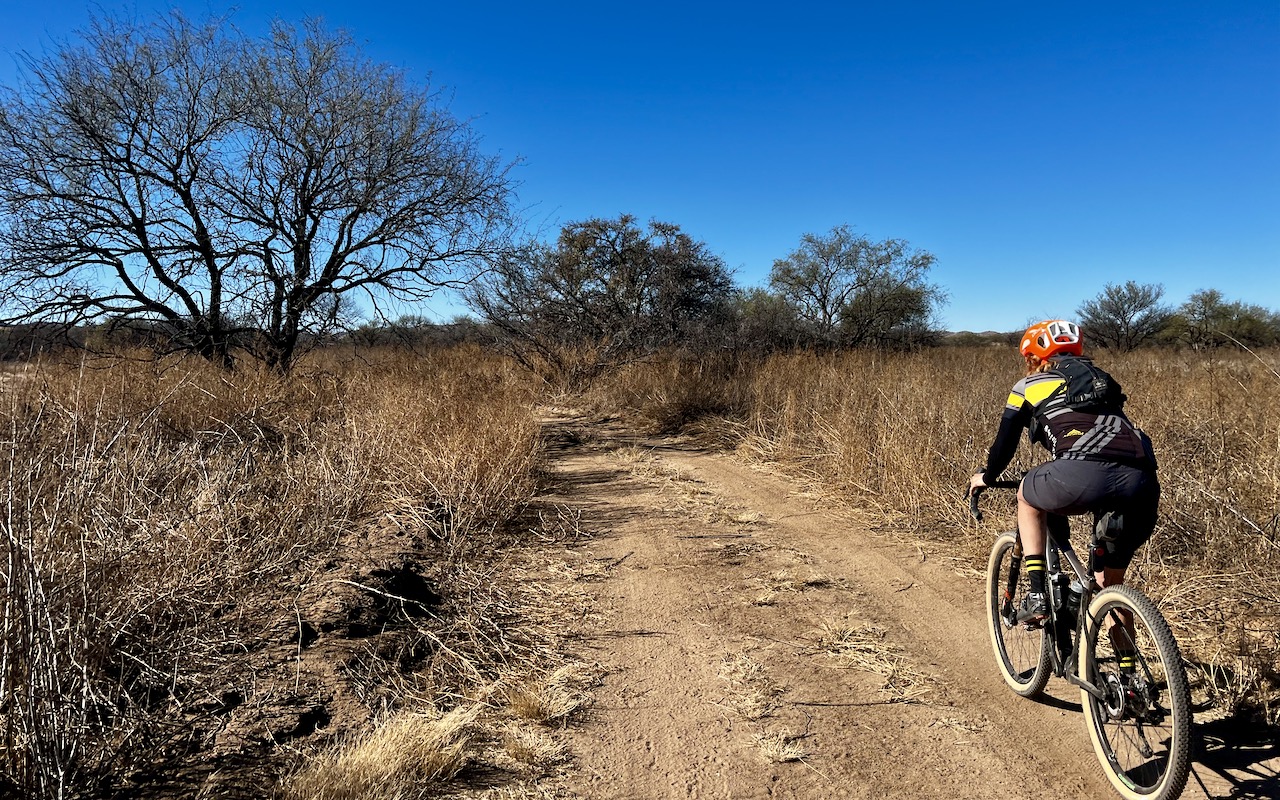
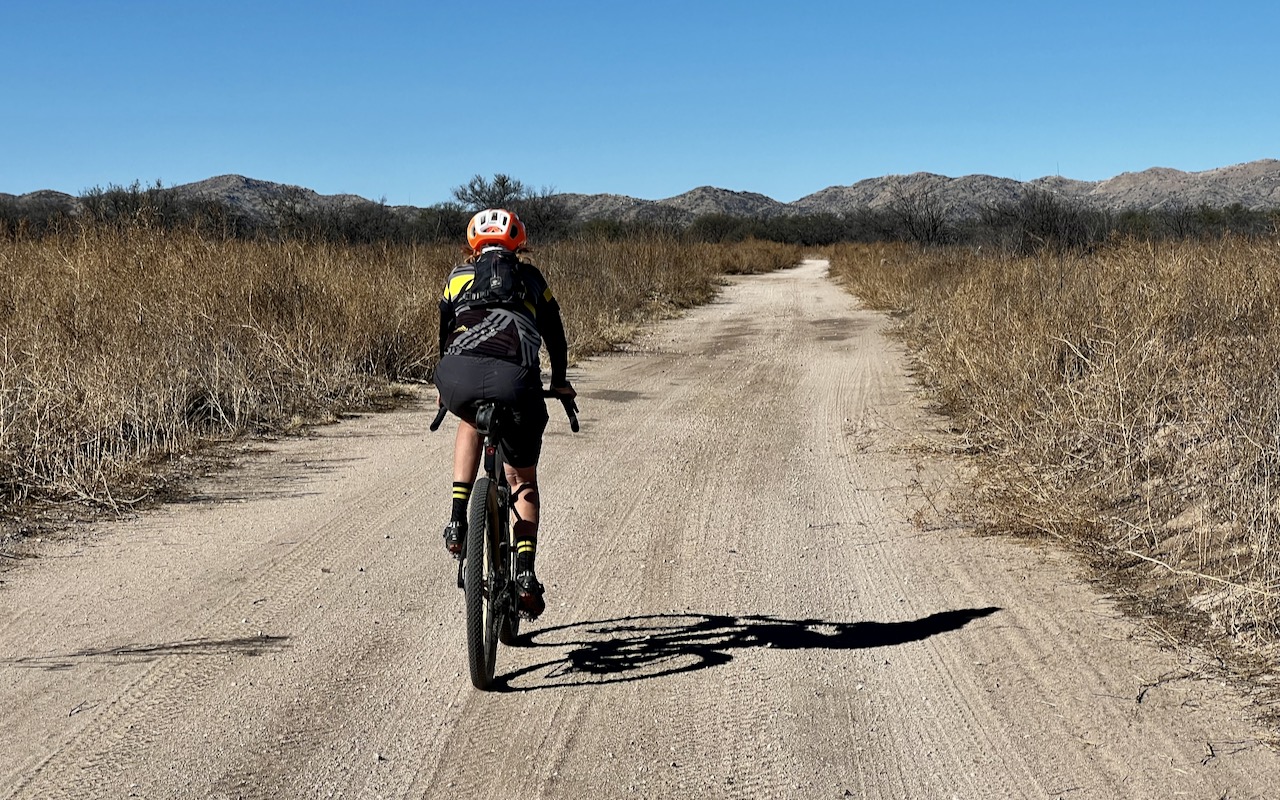

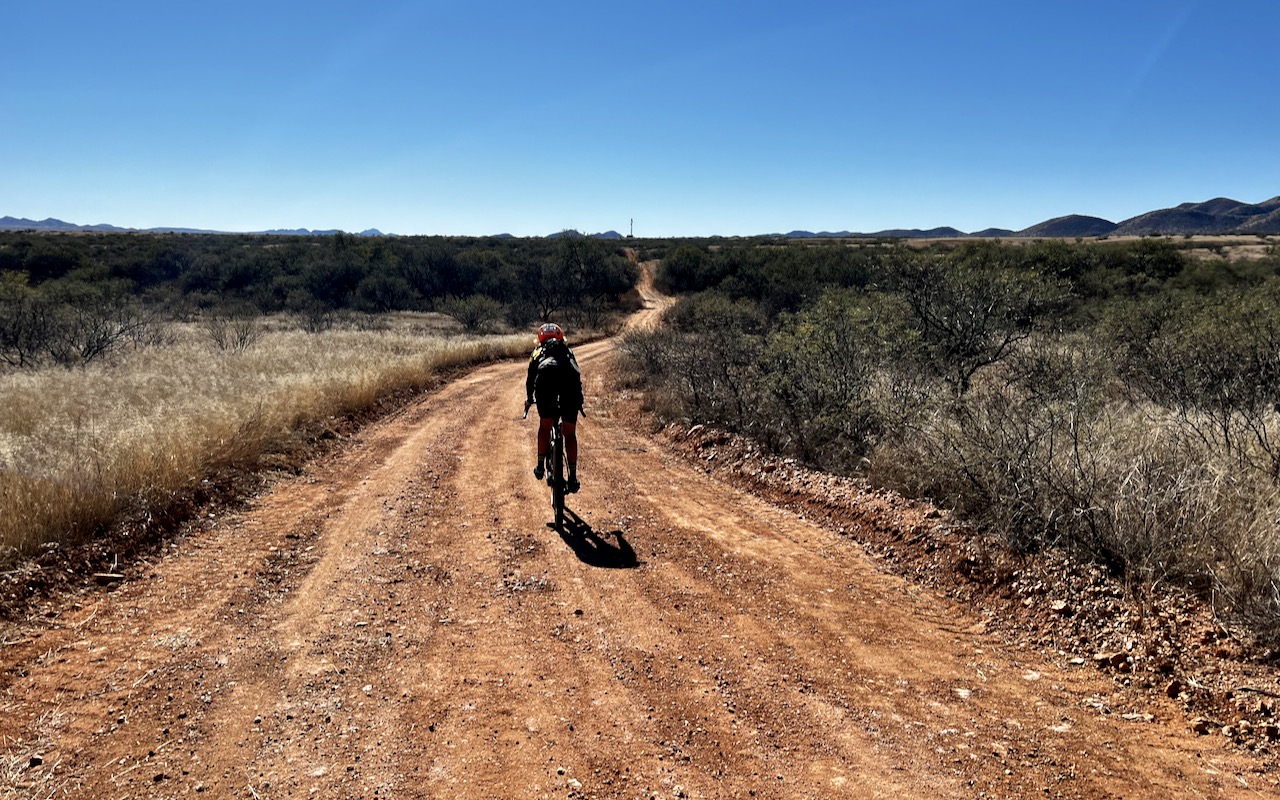
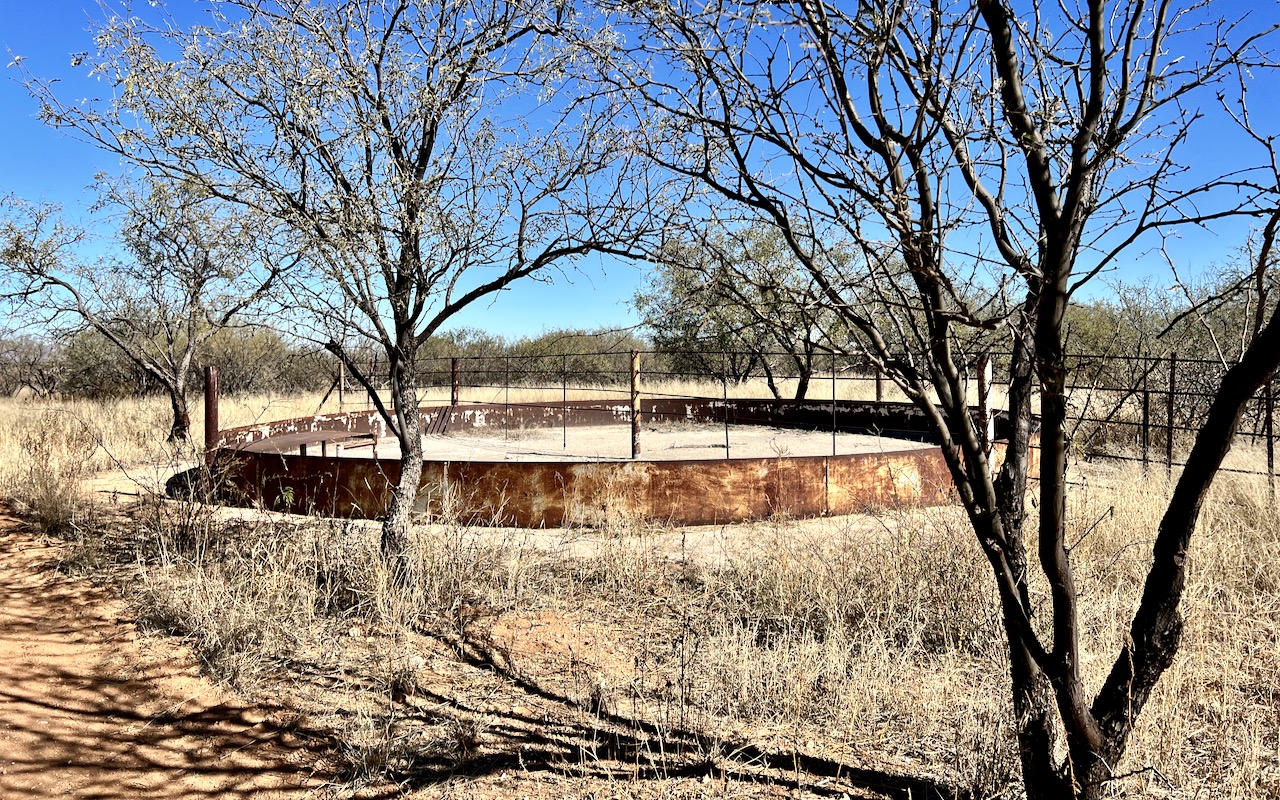


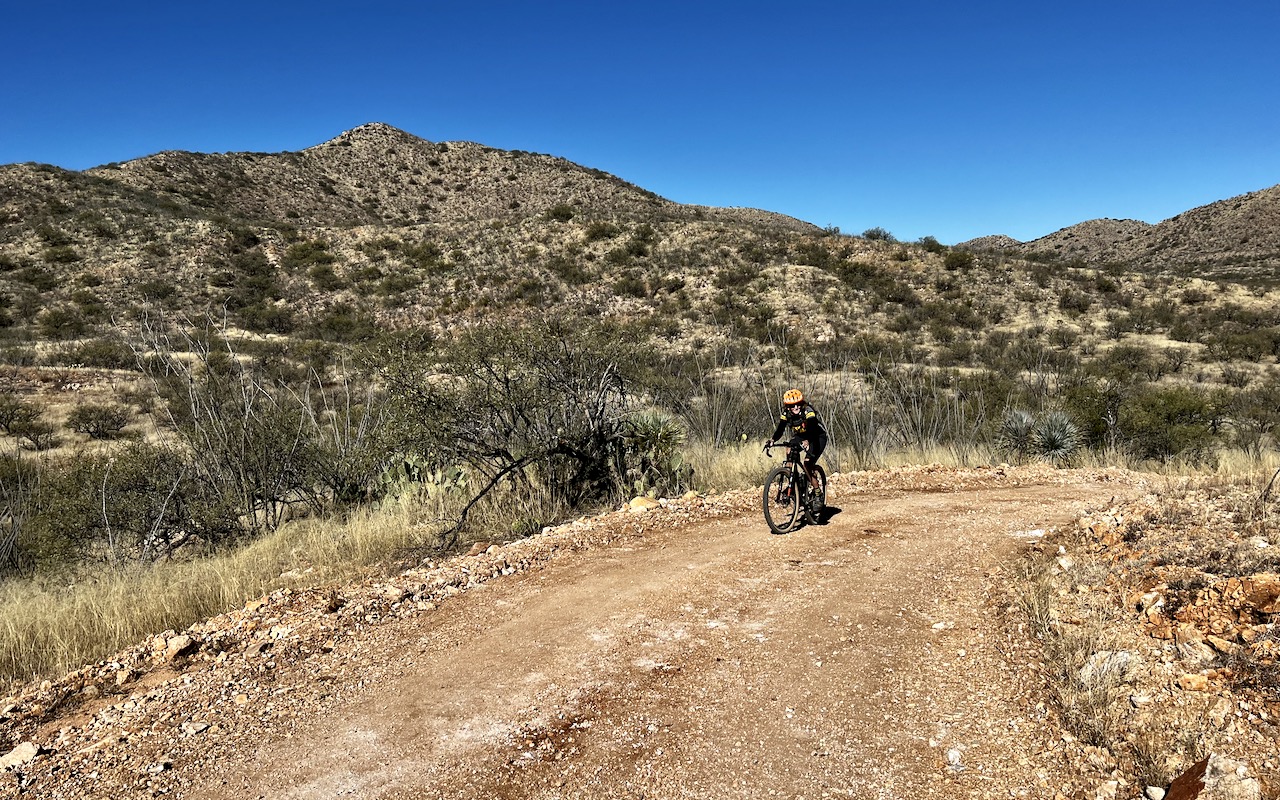
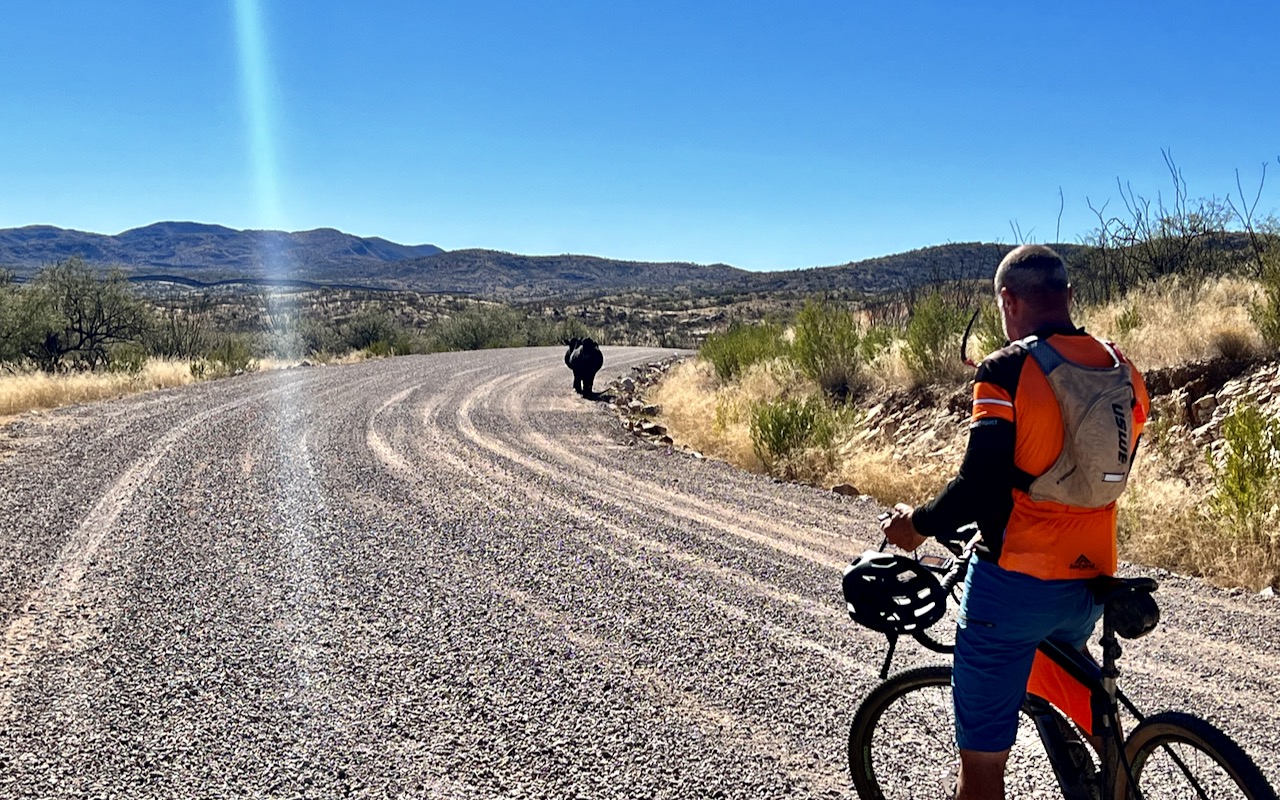
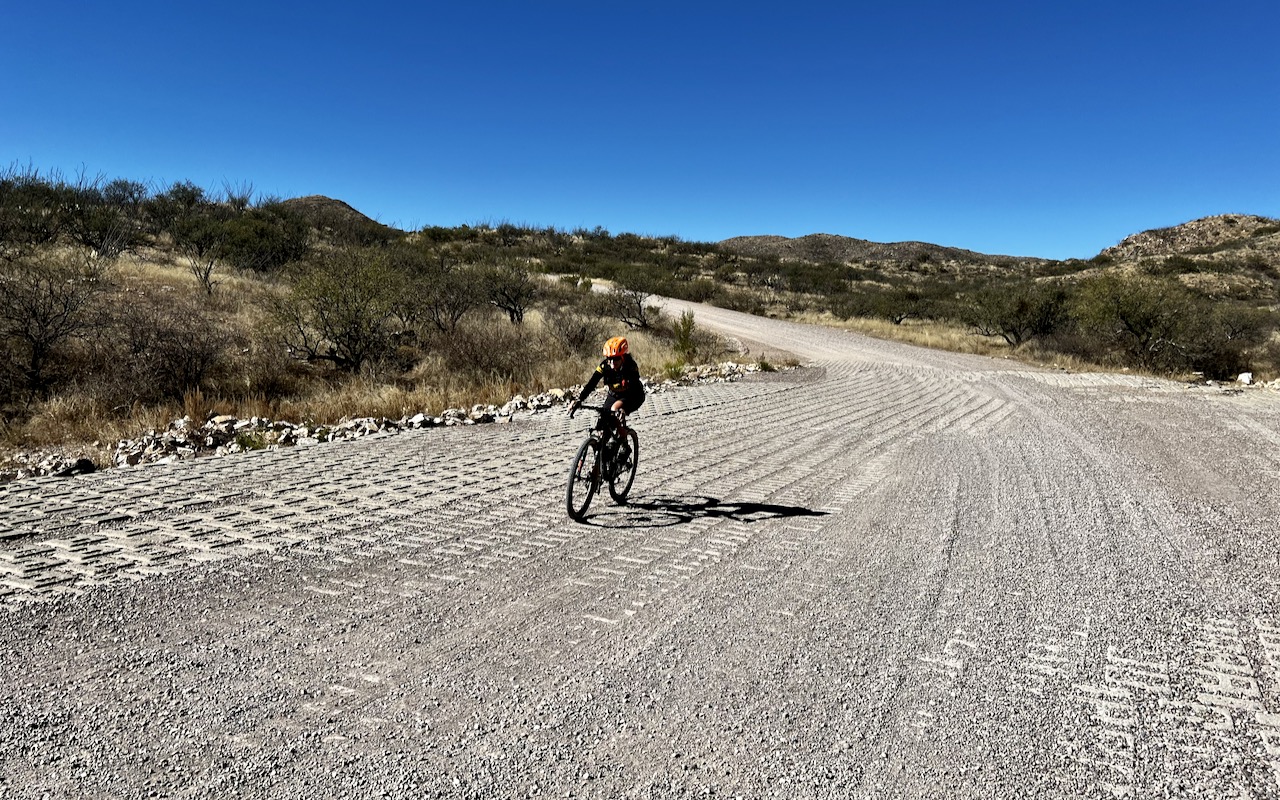
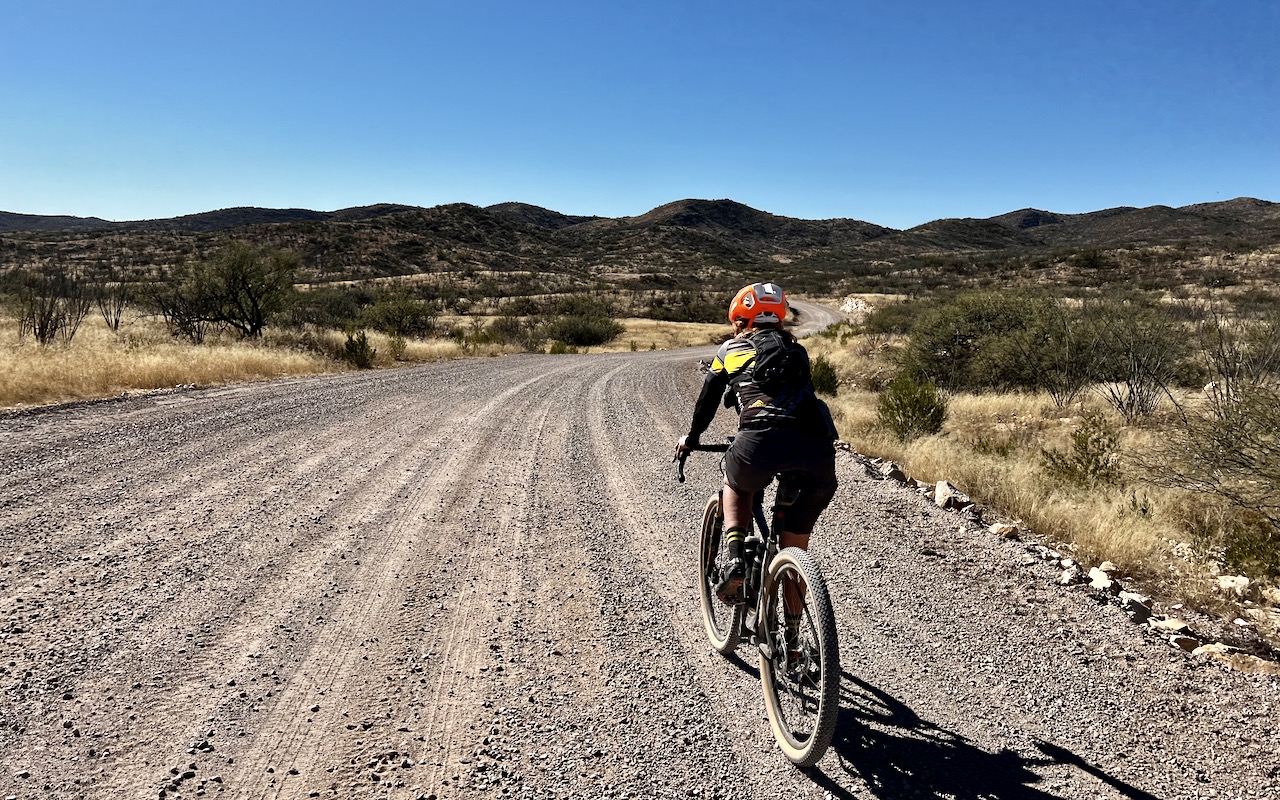
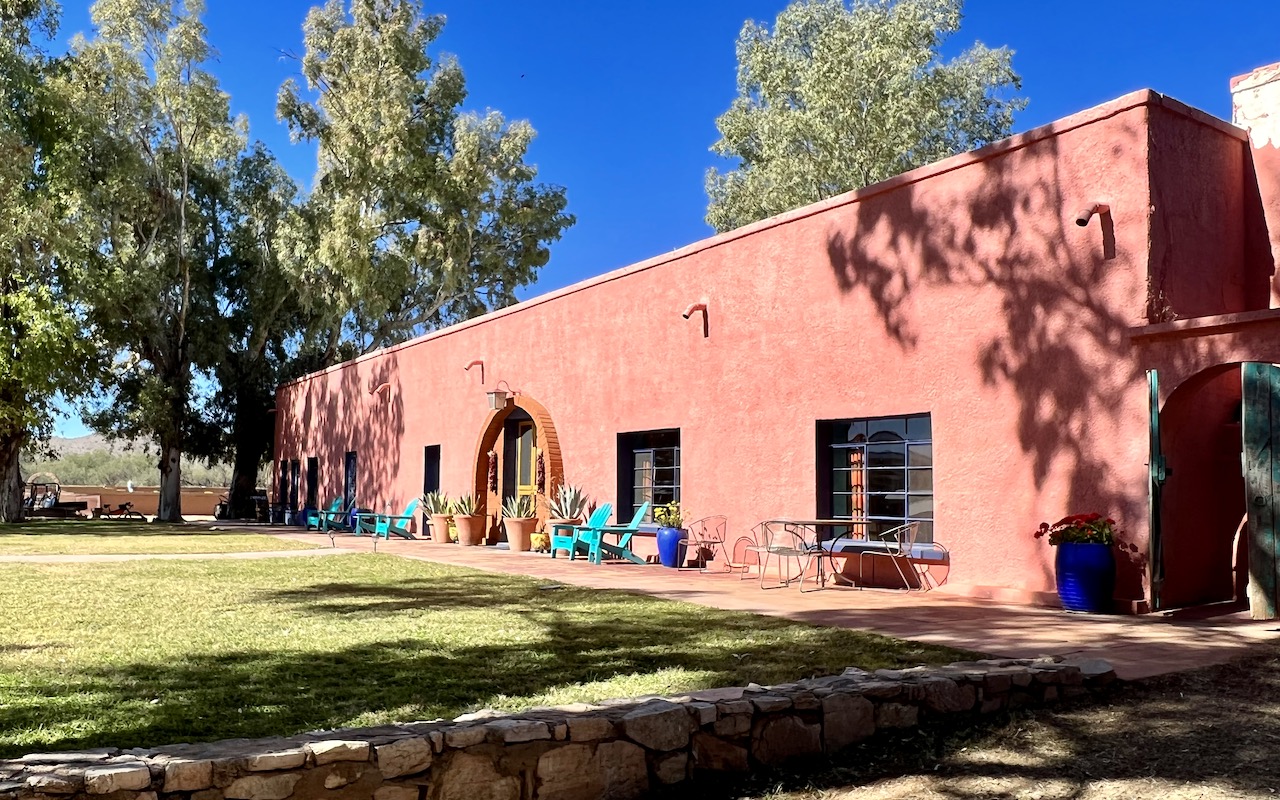
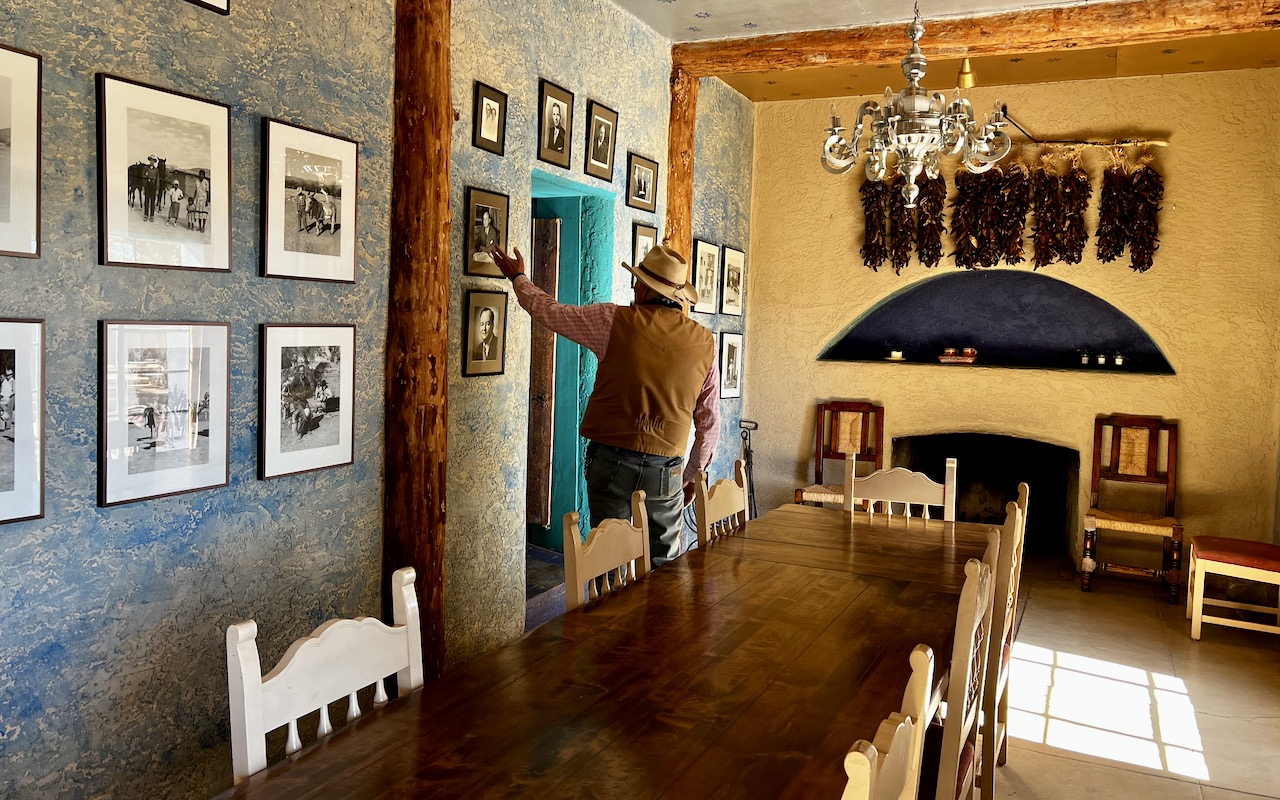

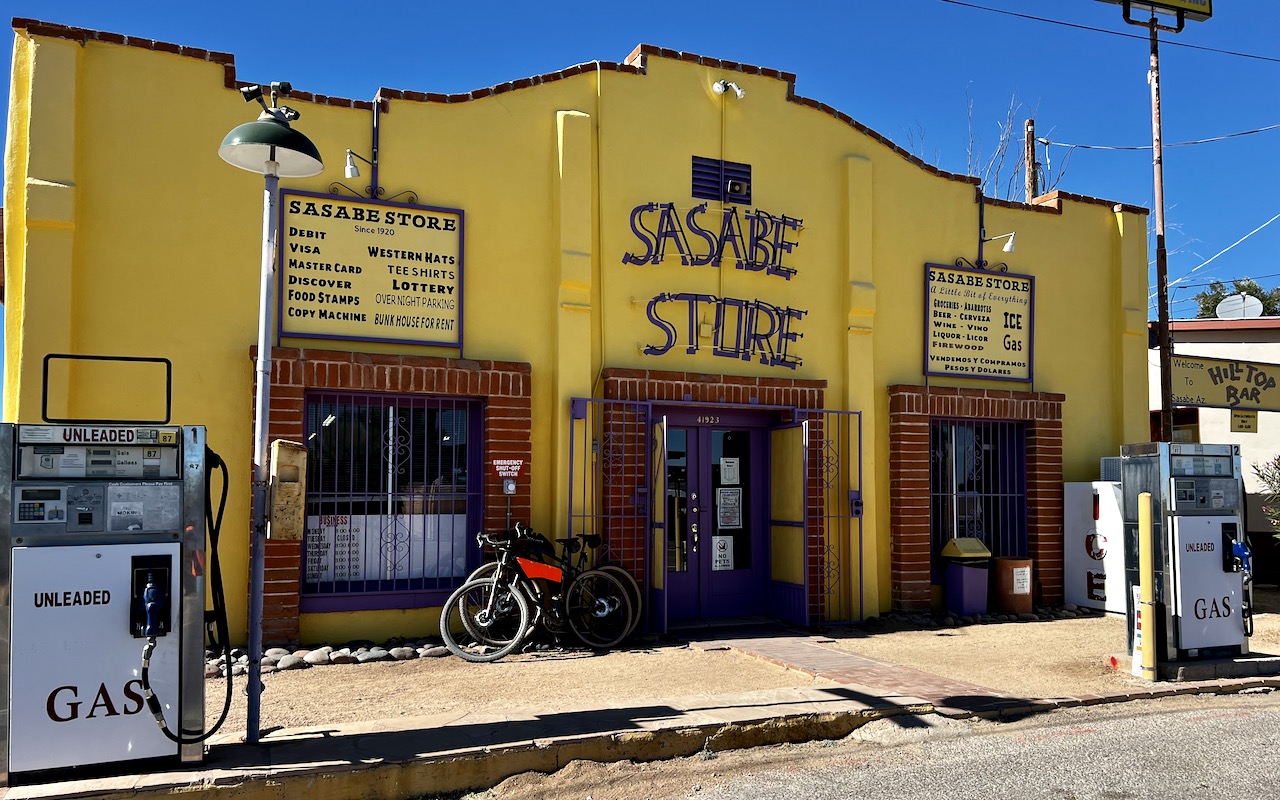

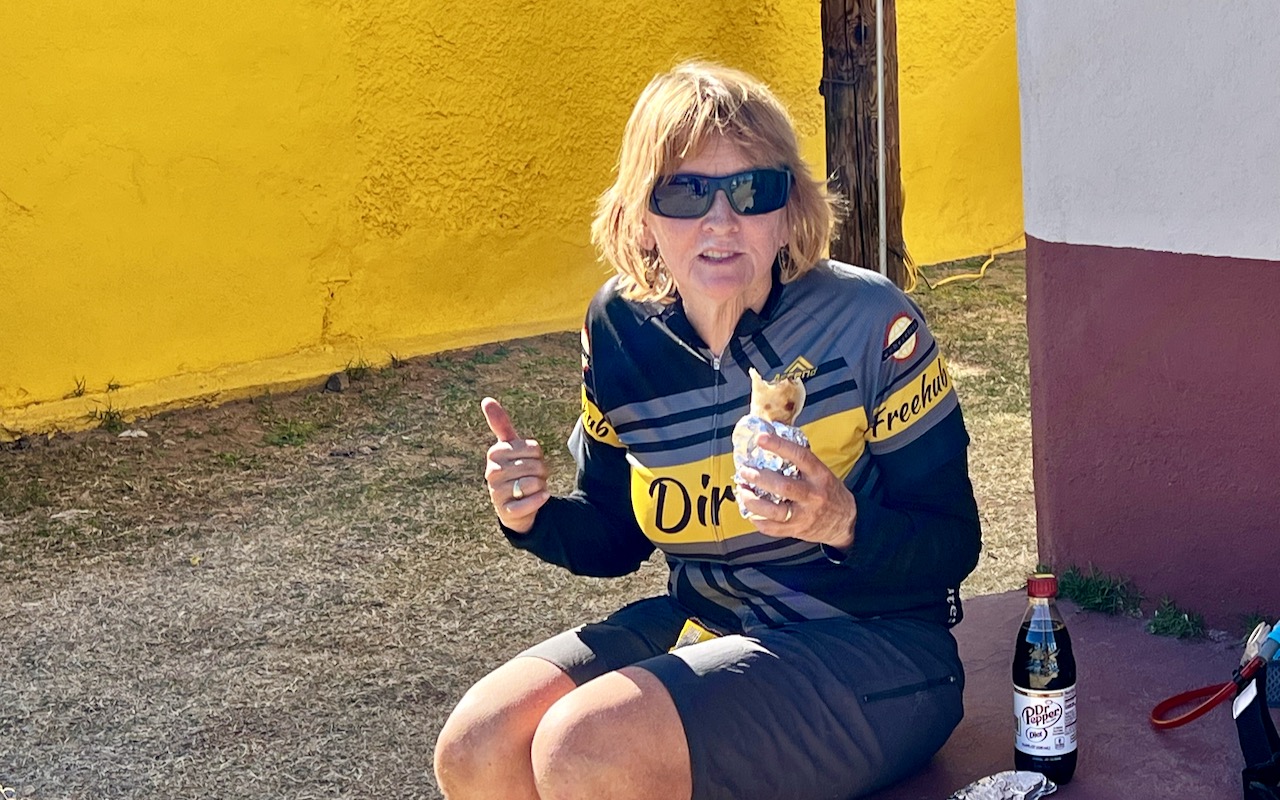







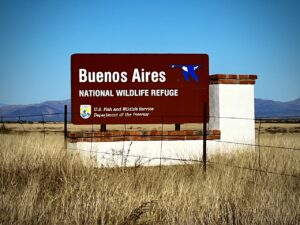 Remote, rugged natural beauty. Emptiness. Big views. That’s the
Remote, rugged natural beauty. Emptiness. Big views. That’s the 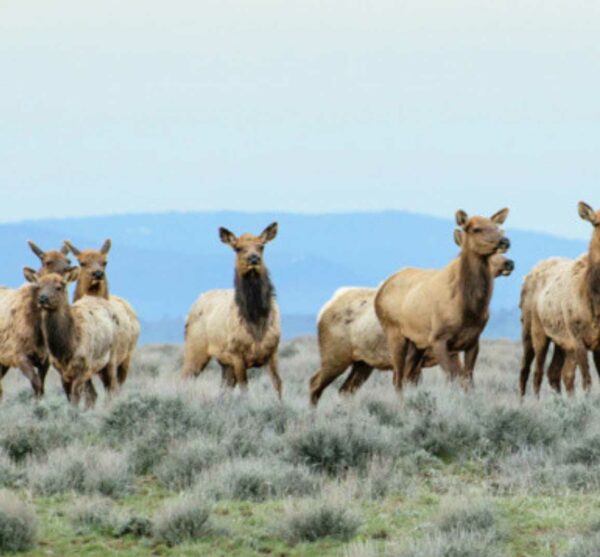

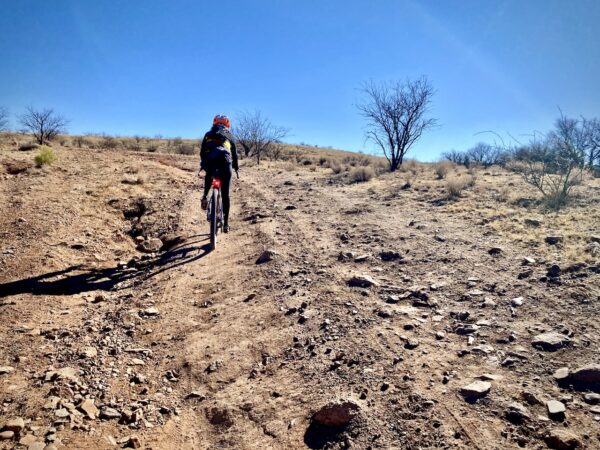


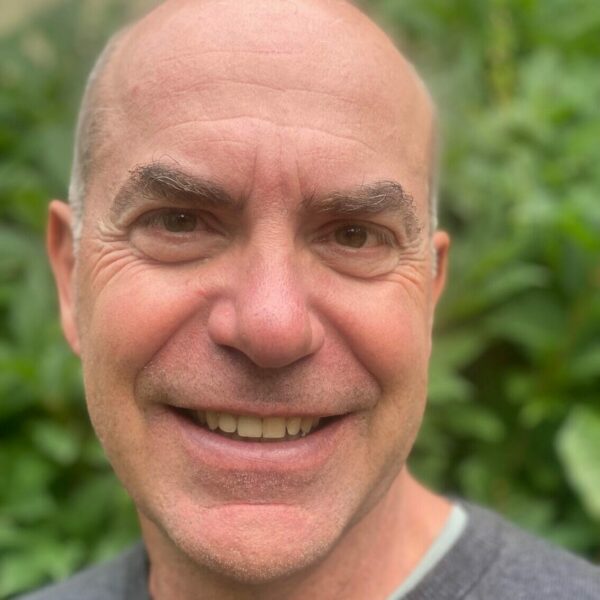
 Behind every route is scouting, mapping, storytelling, and a whole lot of pedal power.
Behind every route is scouting, mapping, storytelling, and a whole lot of pedal power.
Have you ridden this route? Got a question? Join the discussion!